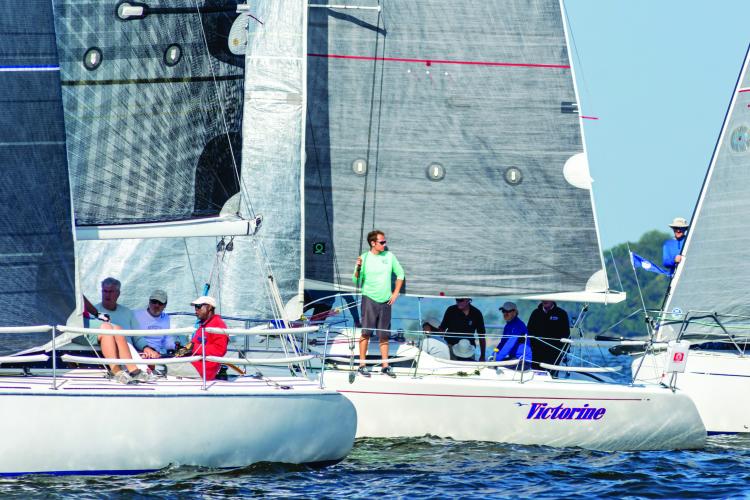ORC on the Forefront of Handicap Racers' Minds
After years of integrating the internationally recognized ORC rating rule in its signature events, last month Annapolis Yacht Club announced that it plans on giving the rule more recognition in 2020 racing events. This news, AYC’s February 1 ORC seminar, plus other emerging events on the East Coast have brought ORC to the forefront of handicap racers’ minds.

Annapolis sailor Robert Ranzenbach, a member of the Offshore Racing Congress (ORC) International Technical Committee, explains, “We are responsible for general technical matters, including responsibility for the maintenance and development of the Velocity Prediction Program (VPP) and other software that is used by the ORC for establishing yacht handicaps. We perform research throughout the year and typically meet (in Europe at least three times a year) to continue improving the ORC VPP.
“We just achieved a major step forward for 2020 by moving past the old 75 percent mid-width approach to differentiate between Headsails Set Flying (HSF) which are like code zero sails and sails like spinnakers. We used to only account for essentially only two kinds of flying sails (all those not set on the headstay), less than 75 percent and more than 75 percent. This created a lot of sail-design shenanigans right near the 75-percent hard point. Instead we now use a much more sophisticated and nuanced approach to predict the performance of each flying sail in a boat’s inventory depending upon the individual geometry of each sail. This should help reduce the number of crazy code zero sails that had flapping leeches or fold-over luffs, provide for the opportunity to better fine tune the intended purpose of all the HSF in the boat’s inventory, and provide fairer handicaps for everyone.”
Ranzenbach continues, “If you want the fairest handicap that depends upon the expected performance of your particular boat (performance parameters like shape/size of the boat and keel, displacement, sail area, and stability) and the type of course and windspeed, using ORC is the way to go.
“The most accurate way to use ORC is to have your boat fully measured (receive an ORC International Certificate), but if a Chesapeake Bay PHRF sailor wants to dip their toe into the water and experience a bit of what ORC has to offer without committing to a full measurement, the next best thing is to get an ORC Club Certificate, which does not require the same level of measurement, but still produces an ORC certificate that will allow the boat to race in ORC events.”
Why would a sailor choose the more expensive international certificate rather than club? “The club certificate approach typically ends up rating your boat a bit faster than if it had a full measurement. This provides reasonably fair racing when there are both club and international certificate boats on the course, while simultaneously encouraging sailors to get the more accurate international certificate.”
A good starting point for anyone interested in getting an ORC Club Certificate is at the U.S. Sailing ORC page: ussailing.org/competition/offshore/orc. Pricing for a club certificate ranges between $100-150.
Among Chesapeake races with ORC divisions in 2020 will be: AYC’s Wednesday Night Races (starting April 22), Spring Race to Oxford (May 9), Annual Regatta (June 12-14), Fall Race to Solomons (September 26), and Fall Series (October 3-4, 10, 17-18); and the AYC and EYC Annapolis Labor Day Regatta (September 5-6).
To practice for ORC/IRC World Championship in Newport (September 25-October 3), sailors will want to head to New York Yacht Club’s Annual Regatta (June 12-14) and NYYC Race Week at Newport Presented by Rolex (July 13-18). Find links to these regattas at NYYC racing page here.




